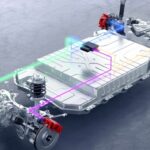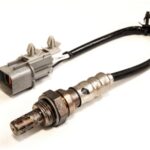Slide 1. Introduction.
The class develops what preventive maintenance of a vehicle is, what it is used for, and its implications for fleet management.
Slide 2. Preventive maintenance.
Preventive maintenance is the best way to take care of something as valuable as a fleet vehicle. This approach involves anticipating mechanical problems that could arise from continuous use, ensuring optimal performance and extending the vehicle's useful life.
Through scheduled inspections, preventive maintenance allows small irregularities to be detected and fixed before they become serious breakdowns.
- What is preventive maintenance?.
Preventive maintenance consists of performing periodic inspections to keep the car in optimal condition in terms of safety, comfort, and efficiency. During these inspections, key components are adjusted and filters and fluids are replaced to ensure that the vehicle is functioning properly at all times.
- The importance of regular check-ups.
Regular check-ups are essential for detecting faults early on. For example, they can detect problems with the brakes, suspension, or engine before they become costly breakdowns.
In addition, many companies offer specialized services that facilitate these inspections, such as promotions at repair shops or additional services provided by insurance companies, which are especially useful when it comes to passing the vehicle inspection test (MOT).
- Key components in preventive maintenance.
Preventive maintenance covers a wide variety of car systems and components. Among the most important are:
1. Engine.
Ø Changing oil, air, and fuel filters.
Ø Replacing the lubricant to protect the internal components of the engine.
Ø Changing the coolant in the cooling system.
Ø Checking the spark plugs in gasoline engines.
2. Exhaust system and catalytic converters.
Exhaust system components are parts that must be replaced periodically, as they deteriorate with use. If not done in a timely manner, the vehicle will not function properly, will consume more fuel, and will increase CO2 emissions.
Therefore, it is important to periodically inspect all exhaust system components, as their proper functioning has a direct impact on our safety and the environment.
3. Electronic control units-ECUs.
Diagnostics must be performed using the OBD port to determine if there are any faults in the vehicle and to determine if the electronic control units are functioning properly.
4. Bodywork.
Perform a visual inspection to find small bumps and dents so they can be repaired.
5. Cabin.
Changing the cabin air or pollen filter.
6. Tires.
Ø Checking tire pressure and wear.
Ø Maintaining proper tire pressure helps reduce fuel consumption.
Ø Changing the tire if it's worn, uneven, or shows irregularities.
7. Brakes.
Ø Checking the brake pads, discs, and brake fluid to ensure their efficiency.
8. Battery.
Ø Measuring the load to avoid problems starting the vehicle.
9. Lighting.
Ø Checking the operation of headlights and lights, which are essential for visibility and safety.
10. Shock absorbers.
Their proper functioning is affected by several factors: road conditions, vehicle load, mileage, as well as weather conditions (cold, heat, and humidity).
If these factors are not balanced, the car will not adapt well to the asphalt, which will cause the tires to lose contact with the road in certain situations, resulting in premature or uneven tire wear and reduced grip, making driving unsafe.
11. Timing belt.
This part deserves special attention due to its importance in the internal gearing of the engine. A malfunction can cause a domino effect and damage other parts of the engine. Furthermore, a failure can lead to a serious and costly breakdown.
The best precaution is to replace it according to the manufacturer's recommended schedules and even replace it preemptively. The estimated lifespan of the timing belt is listed in the car's maintenance booklet, which indicates a maximum mileage.
12. Windshield wipers.
Windshield wiper blades are made of rubber, so sudden changes in temperature, prolonged exposure to sunlight, and the passage of time shorten their lifespan. It's normal for them to deteriorate, for the rubber to warp, or for the rubber to harden.
13. Windshield and glass.
Immediately repair windshield cracks and chips to prevent them from becoming bigger problems. A well-maintained windshield also contributes to the vehicle's structural integrity.
14. Wash your car frequently.
Keep your vehicle clean inside and out. Removing dirt and debris is a basic hygiene measure that not only helps maintain the vehicle's appearance but also protects the various materials in the equipment—plastic, fabric, metal, etc.—and the body's paint.
For street cleaning fleets, municipal solid waste collection, etc., the vehicle should be washed at least 2-3 times a week for hygienic reasons.
15. Bodywork.
If the vehicle has bodywork, preventive maintenance must also be performed.
16. Truck semi-trailers.
Ø Check that the tarps are not torn or damaged.
Ø Check the tires.
Ø Check the braking system.
Ø Check the lighting and signaling system.
Ø Check the suspension.
Ø Check couplings and hitches.
Ø Check doors and locks.
Ø Check the cooling and ventilation system.
- Benefits of Preventive Maintenance.
Performing preventive maintenance has significant advantages for both the vehicle and the driver:
1. Fewer breakdowns or fewer corrective maintenance requests.
Proper vehicle management contributes to fewer corrective maintenance requests, which reduces downtime and allows vehicles to be available for service.
2. Lower likelihood of accidents.
Detecting and repairing faults early reduces the risk of breakdowns while driving.
3. Cost savings.
Identifying problems in their early stages helps avoid costly and time-consuming repairs.
4. Extending the lifespan of the car.
Keeping the vehicle in good condition ensures it can be used for longer in perfect condition.
5. Reducing emissions and fuel consumption.
A well-maintained car is more efficient and environmentally friendly, preventing increases in fuel consumption and polluting emissions.
6. Maintains resale value.
A car with a history of preventive maintenance has a higher resale value.
- How to keep your vehicle in good condition.
To get the most out of preventive maintenance, follow these guidelines.
1. Consult your owner's manual.
This document contains the manufacturer's specifications and recommendations for vehicle maintenance.
2. Create a follow-up plan.
Keep a record of the maintenance activities performed and the dates of future inspections.
3. Trust professionals.
Make sure repairs and inspections are performed by qualified technicians in appropriate workshops.
4. Pay attention to symptoms.
Pay attention to any noises, vibrations, or warning signs the vehicle is displaying; acting promptly can make all the difference.
- Implications for fleet management.
The main consequence is that costs are lower and vehicles are available for service longer than if corrective maintenance is performed.
Preventive maintenance is the policy that must be followed in vehicle fleet management.
Preventive maintenance must be performed according to the vehicle manufacturer's instructions, within the specified time period, by qualified personnel, and in an appropriate workshop.
Maintenance planning is the responsibility of the fleet manager, not the workshop manager or the driver.
It is very important to plan preventive maintenance in advance. The most important thing is to know when vehicle maintenance is due. There are two options.
1. Use telematics.
Telematics plans maintenance and notifies us when the vehicle needs preventive maintenance. It is always recommended to use telematics to manage the fleet. Maintenance planning should be reviewed weekly.
2. Do not use telematics.
If we don't use telematics, we must know the vehicle's mileage to calculate when it is due.
Some vehicles, such as public works machinery, travel few kilometers but have many engine and usage hours, so engine hours must be used to plan maintenance.
It is recommended to compile the mileage and plan maintenance for all vehicles once a week. Using an Excel spreadsheet or similar, and an estimated average weekly mileage, we calculate the approximate date the maintenance is due.
The vehicle's mileage can be communicated by the vehicle manager or the driver by phone, email, text message, or WhatsApp to the fleet manager.
Once you know when the vehicle needs maintenance, you must inform the vehicle manager, the workshop manager, and the driver.
A list of all vehicles must be made, sorted by maintenance date, and given to the vehicle managers and the workshop manager.
There may be vehicles whose maintenance is past due; these vehicles are given priority for maintenance.
If we have our own workshop, we must ensure we have all the spare parts available and schedule a date and time for the maintenance.
If we don't have our own workshop, we must schedule a date and time with an external workshop.
It is very important to train the driver on how to report the vehicle's mileage and what to do when the vehicle is due for maintenance.
It is a bad practice to leave the planning of vehicle maintenance to the driver; they will most likely miss the scheduled maintenance.
In fleets where the vehicle may be away from our facilities for several weeks, such as freight transport fleets, it's a bad practice to check the vehicle's mileage when it's in our facilities occasionally, because it's due for a breakdown, loading cargo, etc., and maintenance may be overdue.
Preventive maintenance saves money in the long run, keeps your vehicle in optimal condition, preserves its value, and ensures smooth, safe driving. Prevention is always the best strategy.
Slide 3. Thank you for your time.
The class has developed what preventive vehicle maintenance is, what it's used for, and the implications for fleet management, see you soon.
Download the audio




















